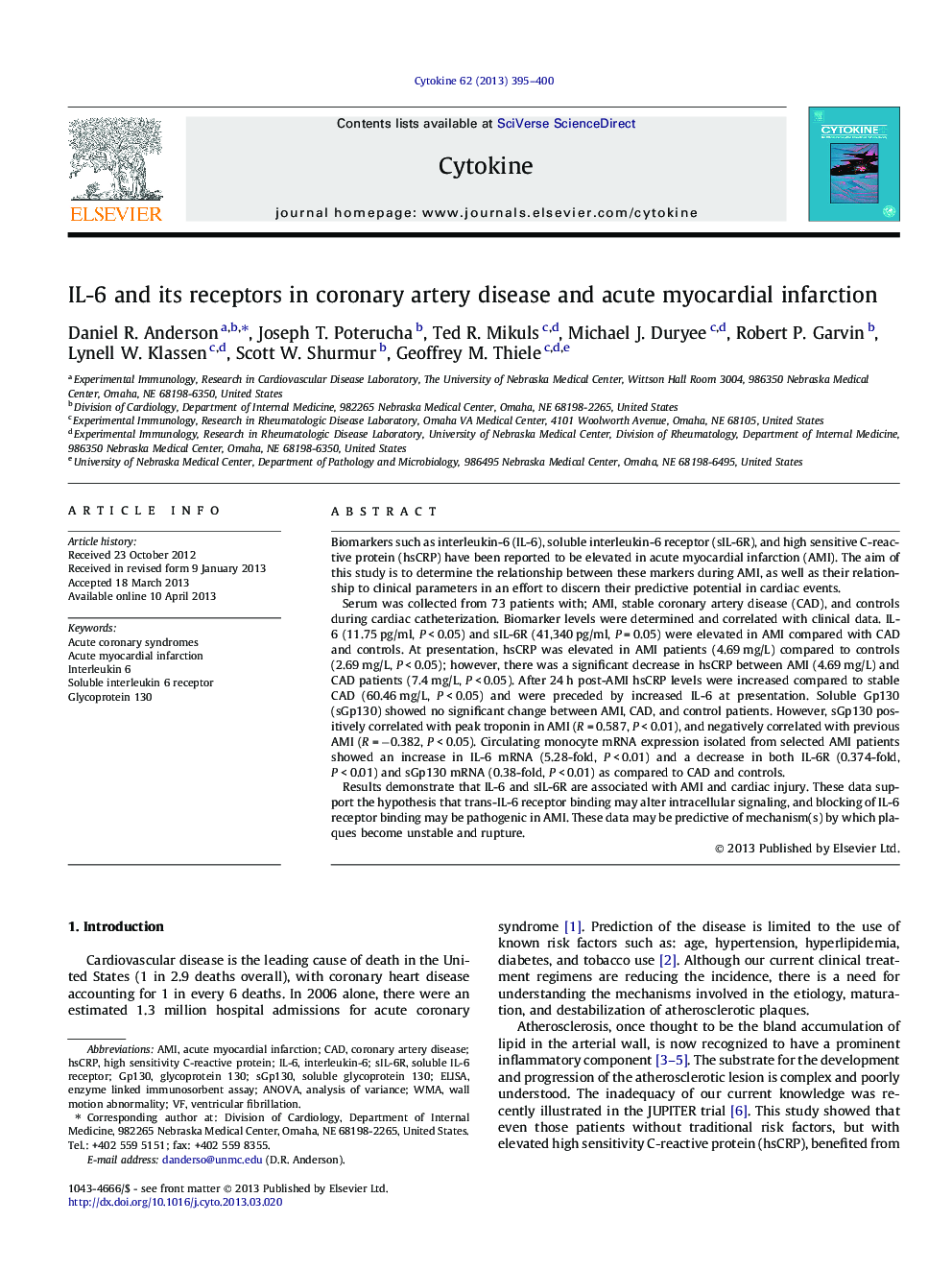| Article ID | Journal | Published Year | Pages | File Type |
|---|---|---|---|---|
| 2794267 | Cytokine | 2013 | 6 Pages |
•IL-6, soluble IL-6 receptor, and glycoprotein 130 are associated with cardiac injury.•C-reactive protein is elevated 24 h postmyocardial infarction.•Association of ventricle fibrillation with IL-6 and hsCRP may play a role in screening patients.•These biomarkers may help predict vulnerable plaque prior to acute myocardial infarction.
Biomarkers such as interleukin-6 (IL-6), soluble interleukin-6 receptor (sIL-6R), and high sensitive C-reactive protein (hsCRP) have been reported to be elevated in acute myocardial infarction (AMI). The aim of this study is to determine the relationship between these markers during AMI, as well as their relationship to clinical parameters in an effort to discern their predictive potential in cardiac events.Serum was collected from 73 patients with; AMI, stable coronary artery disease (CAD), and controls during cardiac catheterization. Biomarker levels were determined and correlated with clinical data. IL-6 (11.75 pg/ml, P < 0.05) and sIL-6R (41,340 pg/ml, P = 0.05) were elevated in AMI compared with CAD and controls. At presentation, hsCRP was elevated in AMI patients (4.69 mg/L) compared to controls (2.69 mg/L, P < 0.05); however, there was a significant decrease in hsCRP between AMI (4.69 mg/L) and CAD patients (7.4 mg/L, P < 0.05). After 24 h post-AMI hsCRP levels were increased compared to stable CAD (60.46 mg/L, P < 0.05) and were preceded by increased IL-6 at presentation. Soluble Gp130 (sGp130) showed no significant change between AMI, CAD, and control patients. However, sGp130 positively correlated with peak troponin in AMI (R = 0.587, P < 0.01), and negatively correlated with previous AMI (R = −0.382, P < 0.05). Circulating monocyte mRNA expression isolated from selected AMI patients showed an increase in IL-6 mRNA (5.28-fold, P < 0.01) and a decrease in both IL-6R (0.374-fold, P < 0.01) and sGp130 mRNA (0.38-fold, P < 0.01) as compared to CAD and controls.Results demonstrate that IL-6 and sIL-6R are associated with AMI and cardiac injury. These data support the hypothesis that trans-IL-6 receptor binding may alter intracellular signaling, and blocking of IL-6 receptor binding may be pathogenic in AMI. These data may be predictive of mechanism(s) by which plaques become unstable and rupture.
